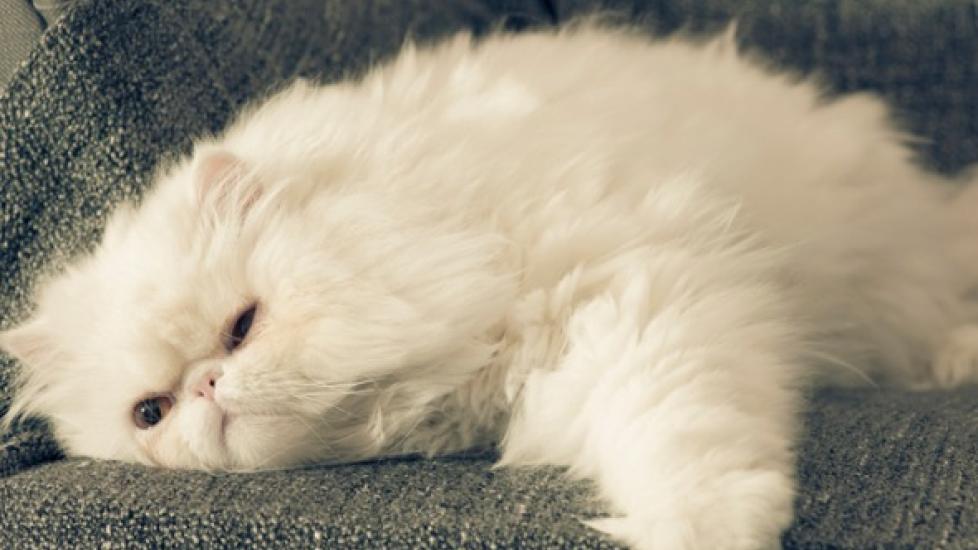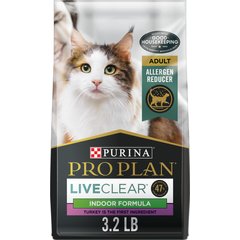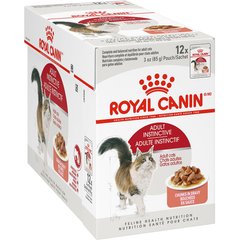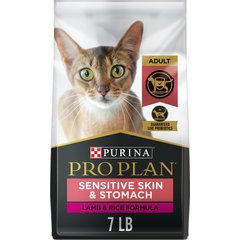How Can You Tell If Your Cat is Overweight?
Cats come in a variety of shapes and sizes, and they even have varying levels of fluff, so it can be difficult to identify whether your cat is overweight. Many pet parents don’t even realize that their cat is overweight, so this is actually a topic I address on a daily basis.
And while it’s a difficult conversation to have, it’s a vital conversation that can have deep impacts on your cat’s overall health.
Here are a few tips for determining if your cat is overweight, at a healthy weight, or too thin.
How Do I Know If My Cat Is Overweight?
There is no one “perfect weight” for a cat, but most should be about 9-11 pounds.
To help determine a cat’s ideal weight and assess their overall health, veterinarians look a little bit deeper than simply the number on the scale. Just as humans are commonly evaluated using a BMI (body mass index), we use something similar to evaluate cats, called the Body Condition Score (BCS) system.
Body Condition Score System
Although there are a few systems out there, most veterinarians use a 1-9 system, and it’s something you can quickly learn so you can evaluate your cat.
The Body Condition Score system is independent of the actual size of your cat, how muscular they are, or even how much fur they have. It helps to go beyond the number of pounds and see if they’re at a healthy weight for their body.
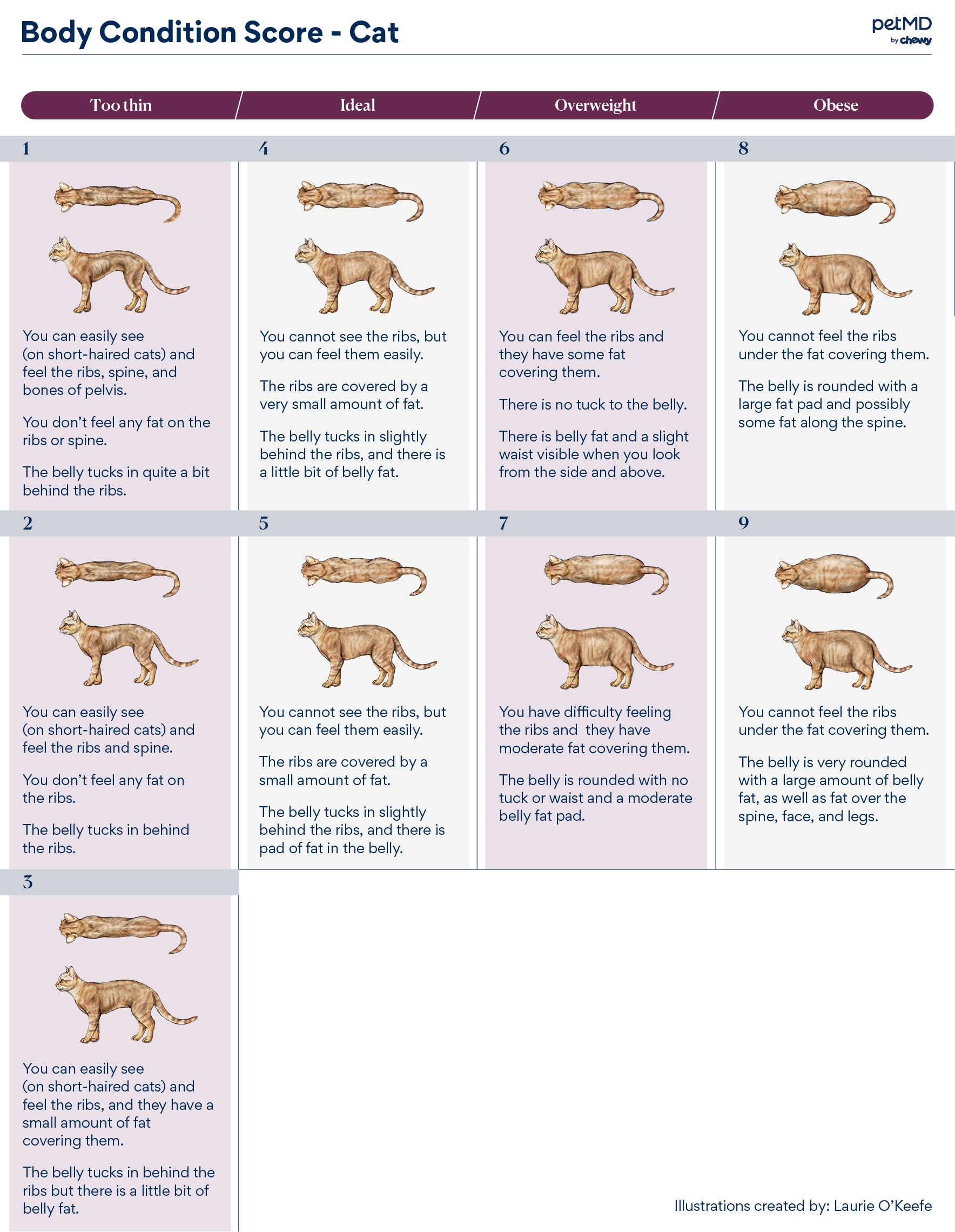
While your veterinarian will do a full body analysis of your cat to determine their BCS, there are ways that you can physically and visually evaluate your cat to get a general idea of was their BSC might be.
Vet Recommended Cat Food
- Purina Pro Plan LIVECLEAR Adult Indoor Formula Dry Cat Food, 3.2-lb bag$23.48Chewy Price
- Hill's Science Diet Adult Multiple Benefit Chicken Recipe Dry Cat Food, 15.5-lb bag$63.99Chewy Price
- Royal Canin Feline Health Nutrition Adult Instinctive Chunks in Gravy Cat Food Pouch, 3-oz, case of 12$26.28Chewy Price
- Purina Pro Plan Adult Sensitive Skin & Stomach Lamb & Rice Formula Dry Cat Food, 7-lb bag$28.08Chewy Price
Determining Your Cat’s Body Condition Score
Cats will fall into three categories:
-
Healthy
-
Underweight
-
Overweight
Within these categories, your vet will determine the severity by giving a specific BCS from 1 to 9.
Here’s a breakdown of how you can evaluate your cat and what the characteristics are for each category.
Healthy Cat Weight: BCS 5
The ideal BCS for a cat is 5. A cat with a BCS of 5 will have the perfect blend of a little extra “reserve” fat without so much as to be causing health problems.
When viewed from the side, a cat at an ideal weight will have a small “tuck” right where the belly meets the area of the hips—in other words, the belly doesn’t drag across the floor.
The stomach should be held nice and tight up to the cat and will actually curve UP to meet the hind legs.
When you look at the same cat from the top, you can see small indentations—a “figure 8” waist right in front of the hips.
If you pet a BCS-5 cat, you can feel both the backbone and the ribs, but you really can’t see them from any distance.
Underweight Cat: BCS 1-4
Occasionally, we see cats that are “too thin, ” which will earn a score of 1-4. If a cat is a 1, that means they are extremely emaciated to the point of starvation. A cat at a 4 would be slightly underweight and will typically require a physical exam to determine the extent.
For these kitties, we see a severe tuck of the belly as it comes up to the hind legs, as well as a very noticeable “waist” from the top.
When you pet a cat with a low BCS, you can really feel the bones of the spine as well as those of the ribcage.
Although there are other reasons these bones can stick out (particularly in old kitties that have thyroid, kidney, or other diseases), in a younger healthy cat, being too thin is the most common cause.
Overweight Cat: BCS 6-9
Much more commonly, however, are the cats that rate above a BCS of 5. These cats have become too heavy for their frame, so they will look more block-like.
From above, an overweight cat will look more like a rectangle than a nice, tapered figure 8. An overweight cat will have a belly that doesn’t come up to meet their hips but rather drags all the way down and sways when they walk.
When petting an overweight cat, you won’t be able to feel any ribs or their backbone.
The Importance of Maintaining a Healthy Cat Weight
Being at a healthy weight is essential to a cat’s overall health. Overweight cats are more prone to diabetes, heart disease, arthritis, and other problems.
By keeping your cat at a healthy weight, you can help to minimize their risk for these diseases as well as ease any unnecessary stress on their joints and bones.
Talk With Your Veterinarian
Your veterinarian will be your best ally in keeping track of your cat’s weight.
They can help you understand what is normal for your cat and how to monitor their weight to make sure they are maintaining a healthy weight.
Working with your veterinarian to monitor your cat’s weight is also helpful because it’s much easier to address a cat that is at a BCS of 6 or 7 than a cat that has made it all the way to a BSC of 8 or 9.
Once a cat has reached the severely obese levels, they require specialized care to make sure that their weight-loss plan is effective and safe.
By: Dr. Sandra Mitchell, DVM
Featured Image: iStock.com/200mm
